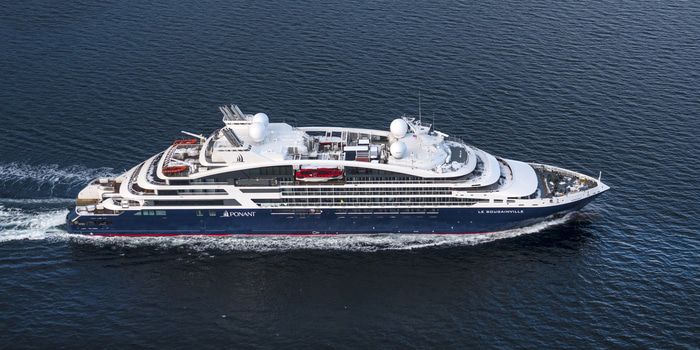Musical Odyssey in the Middle East
In partnership with RADIO CLASSIQUE, with featured guest Alain Duault and an exceptional musical line-up.
“Travelling – it leaves you speechless, then turns you into a storyteller,” said the famous Berber explorer Ibn Battûta. Almost seven centuries later, while humans have partly tamed the arid landscapes of the immense Arabian Desert, the Oriental charm remains and its history is written in the present tense. Bathed by the Persian Gulf, crossed by a desert dotted with oases whose mere mention is enough to captivate us, the Eastern part of the Arabian Peninsula welcomes you for a 11-day cruise aboard Le Bougainville.
Throughout your journey, you will benefit from an excursion included per person per port of call, chosen with care by PONANT. During this cruise, visit the surprising Ithra Cultural Centre in Dammam, discover the Museum of Islamic Art and the Souq Waqif in Doha, or set off on a short hike through the magnificent Wadi Shab canyon in Oman. The diversity of experiences on offer promises you intense and varied moments (to discover the full range of excursions, go to the itinerary tab).
In this region of the world, ancient cities rub shoulders with the futuristic towns designed and shaped by the greatest contemporary architects. Abu Dhabi with its Sheikh Zayed Grand Mosque and its new Louvre Museum; Dubai and its skyscrapers that are among the tallest in the world; Doha and its bay offering a panorama of its fascinating skyline; each location offers a breath-taking experience. You will discover the capital of Bahrain, Manama, which while less famous is no less exciting. As a crossroads for trade routes since ancient times, today it is also more avant-garde than its Emirate sisters. The colourful souk and the Bahrain National Museum are among its must-see sites.
You will have the opportunity to explore the Saudi city of Dammam. This modern metropolis is renowned for its pleasant waterfront and white sandy beaches; above all, though, it is the gateway to the Al Hasa oasis, a UNESCO World Heritage Site. In the endless desert, imagine the largest oasis in the world, its fragrant gardens crossed by canals, springs and palm trees… palm trees as far as the eye can see.
The Sultanate of Oman is as discreet as its Emirati neighbours are bold. The sea maintains a special place in the kingdom of the legendary Sinbad the Sailor. The fishermen here perpetuate millennial traditions while the shipyards are still in operation. Between the sea and the desert, you will sail through the carved fjords of Musandam from Khasab and, leaving from Sour, you will experience the enchantment procured by the shade and cool of a wadi – lush oases planted with palm trees. On the Daymaniyat Islands, you can snorkel in an exceptional natural sanctuary where turtles come to nest. In the capital, Muscat, the fragrances of the Orient and of incense will intoxicate you, the sparkling colours of the markets will captivate you, and the vibrant bustle of the souk will enchant you. The Near East exudes an incredible poetry.
When searching for a luxury yacht expedition cruise, there’s one name above all else that you need to know – Ponant Cruises. Founded in 1988 by former French Merchant Navy officers, Ponant combines succulent luxury with authentic adventures on all seven continents.
From classic Mediterranean itineraries and Caribbean sailings, to bucket-list expeditions around Greenland and Antarctica, Ponant cruises proudly counteract the banality of mainstream voyages with a unique take on the concept of small-ship cruising. It’s the absolute trip of a lifetime.

Featuring innovative and environmentally-friendly equipment, elegantly designed cabins, spacious suites with large windows, and lounge areas that open onto the outside, this new limited-capacity yacht boasting just 92 cabins and suites will offer you a truly unique cruising experience.



